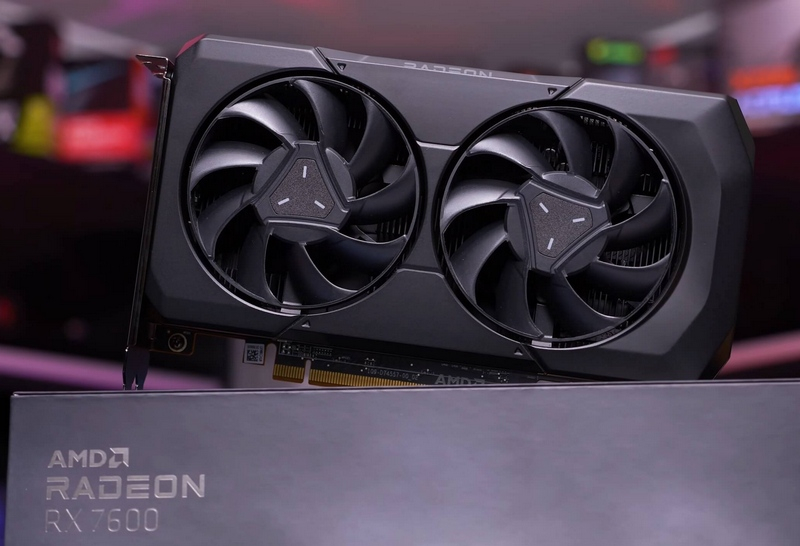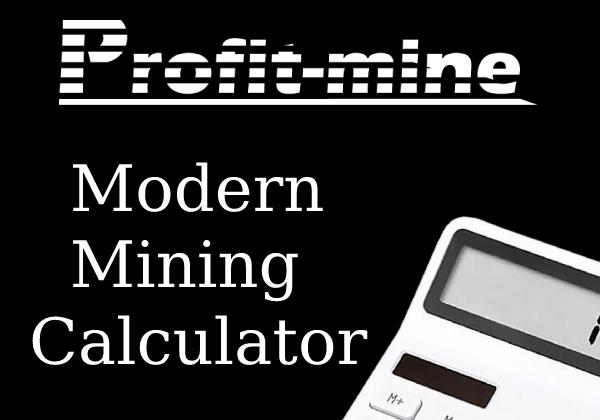
On May 25, 2023, the first entry-level model of the RDNA 3 generation, the Radeon RX 7600, was introduced to the AMD consumer graphics portfolio with a MSRP of $269. Because the announcement of the video card took place the day after the announcement of the RTX 4060 Ti from Nvidia, then you can safely compare these video cards with each other both in terms of price and their efficiency in mining. If the RTX 4060 Ti is not the best choice for mining at its price of 399 USD, then it will be interesting to compare the results in mining with its direct competitor RX 7600.
AMD RX 7600 Specifications:
| Specifications | RX 7600 | RX 6600 | RTX 4060Ti |
|---|---|---|---|
| Release date | 25.05.023 | 13.10.2021 | 24.05.2023 |
| Frequency GPU (BOOST) MHz | 1720 (2655) | 1626 (2491) | 2310 (2540) |
| Cores (CUDA) | 2048 | 1792 | 4352 |
| GFLOPS FP32 | 21.7 | 8.9 | 22.06 |
| Memory | 8Gb GDDR6 | 8Gb GDDR6 | 8GB GDDR6 |
| Memory bus width | 128 | 128 | 128 |
| Total memory bandwidth | 288 | 224 | 288 |
| Power usage | 165 | 132 | 160W |
| Announced price, USD | 269 USD | 329 USD | 399 USD |
| Etchash Hashrate |
32Mh/s 82W |
28.8Mh/s 68W |
38Mh/s 75W |
| Kaspa Hashrate |
313Mh/s 60W |
279Mh/s 40W |
572Mh/s 62W |
If the RTX 4060 Ti was released with, to put it mildly, compromised technical characteristics, then AMD did not follow the lead of its competitor and introduced a worthy continuation of the RX 6600 and, in addition, at a lower cost. The first thing worth noting for the RX 7600 is a significant increase in GPU chip performance in GFLOPS, which increased by almost 2.5 times. The bandwidth of the memory bus has also grown from 224GBit/s to 288Gbit/s, which will also affect the mining algorithms ETHash, ETChash, KawPow and others for the better.
AMD Radeon RX 7600 test results on various mining algorithms:
ETHash/ETChash (Ethereum classic): 32 MH/s 82W
KheavyHash (Kaspa): 313 Mh/s 59W
Blake3 (Alephium): 0.75Gh/s 63W
NexaPow (Nexa): 30Mh/s 84W
Radiant (Radiant): 407Mh/s 60W
ERGO (autolykos2): 53Mh/s 92W
IronFish (iron Fish): 7Gh/s 60W
SHA3d (Kylacoin): 274Mh/s 60W
Conclusion: A 2.5x increase in raw GPU performance on the RX 7600 in practice does not give the same result in mining. On all the new algorithms KheavyHash, NexaPow, Radiant, IronFish, the hashrate in which directly depends on the ability of the GPU to produce gigaflops, did not receive an increase in the hashrate even close to the declared 21 GFLOPS. For comparison, the RTX 4060 Ti with 22 GFLOPS has almost twice the mining performance on these algorithms. At the moment, it is difficult to assess the reasons for such a lag between the RX 7600 and the RTX 4060 Ti, it can be both AMD marketing parrots and miners that are not optimized for AMD. In any case, the RTX 4060 Ti looks a little better, even at a much higher price.
In terms of technical characteristics, the RX 7600 can replace the previously very popular RX 470/480 and RX 570/580 video cards for mining, with the only difference that the energy efficiency of the new generation of video cards is much better, and on some mining algorithms (nexa, radiant, ironfish) the novelty will give out almost twice the hash rate compared to the same RX 580 of the 2017 sample.









